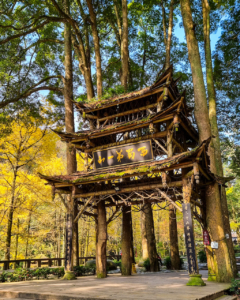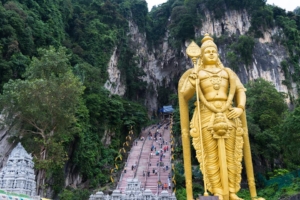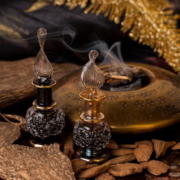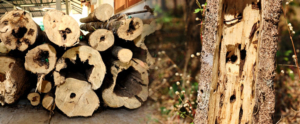Are all oud the same?
Complete guide
This guide to oud for experts or beginners covers all the main topics related to the different types (or rather say “styles”) of oud used in perfumery, dispelling many false myths, for example that all oud oils have stale scents and that they are similar to each other.
Species, site-specific conditions, grafting, and distillation technique are all important factors in imparting the final aroma to this prized oil, but the scarcity of wild oud and the resulting increase in plantation cultivation mean that geographic and species boundaries are no longer as important and delineated as they once were.
With the near total depletion of the original wild trees that once gave us the best oud oils, distillation styles have stepped in to fill the void.
For example, if you want to buy an oud oil that is “Cambodi,” i.e., Cambodian, today it is likely to come from a tree grown in Thailand. Similarly, it is possible to buy an oud oil from Borneo from resinated wood hundreds of kilometers away from the island of Borneo itself. A skilled oud craftsman can derive the characteristics of Cambodian or Kinam style oud from standard Malaysian swamp wood. A plantation owner in Indonesia can grow Agallocha species trees that would once have been traditionally grown only in Assam, northeastern India.
When we talk about oud styles, then, we are talking about oud oils that refer to trees that no longer exist, such as the original Aquilaria Crassna species that produced the famous Cambodian oils of the 1970s, or the wild Agallocha species from Assam, in northern India, once used to produce the Indian oils so beloved by the Arabian market.
The style provides a precise solution to the problem of high demand versus reduced or nonexistent supply of real oud. Wild Agallocha trees are nearly extinct in Assam, for example, and yet the craving for Indian oil is stronger than ever. Market economics dictates, somewhat ironically put, that if it is Indian oil that the customer wants, he will therefore have Indian oil. The depletion of a certain resource, such as a species or generation of oud trees, is a strong constraint, but it is not a real dead end.
This is why a whole generation of oud distillers has emerged that revolves around reproducing the aromatic characteristics exhibited by the original tree. We no longer need the original tree when we have what we think is the recipe for obtaining a quality similar to that of the oil produced from that tree. And indeed, the success of some of these efforts in obtaining the aroma of the original oil using different wood and different distillation techniques is nothing short of amazing.
The boundaries between authentic terroir and adopted styles are somewhat increasingly blurred. It can be very difficult to determine whether an oud oil is a real oil because it actually comes from Assam in northern India or because it has been distilled in the “Hindi” style.
For most buyers, this issue is completely irrelevant. They do not care about the minutiae as long as an oil has an authentic “oud” smell, but for those who love and collect oud oil, these differences matter a great deal.
In an interview for Basenotes, Ensar of Ensar Oud explained the difference between original habitat (also known as French-style “terroir”) and style in a perfectly sensible way: “No one will tell you, ‘Hey, I have the latest oud from Aquilaria Agallocha, fermented for three months, cooked in stainless steel boilers, then oxidized for 30 days.’ They will simply say, ‘I have the last Indian oud available.’ The details of terroir, species and distillation are already built into the style, and the style is not a new thing. But, certainly, the nuances of style can change, and this can lead to a lot of cheating-or should I say, misrepresentation.
Fifty years ago, “Cambodian” meant oud distilled from Acquilaria Crassna trees mainly in Kampong Speu, Pailin, Pursat or Koh Kong. Today, the same profile (fruity, sweet) is made in Thailand in a different way. Not that this presents a problem. For the phantom Mr. Rossi going to Dubai, ‘Cambodian’ means nothing more than an olfactory profile. All the salesmen will insist that the oil is from Cambodia, even if it is not true, but it doesn’t matter because Mr. Rossi really cares little about that.
Yet for those who really love this raw material, it actually means everything. Real Cambodian oud smells very different from Thai oud. But only for true connoisseurs. People approaching the world of artisanal oud are on a learning curve where the details are not yet clear but really matter a lot. You train your nose to identify certain notes and develop your personal taste along the way. Knowing the details helps you navigate the ocean of choices available to you, to distinguish the oud you might like from those to avoid. At this level, style and terroir both matter.”
Style, as opposed to terroir, thus has much to do with the availability of the original tree. In some countries, such as Malaysia, Thailand, and Laos, oud-producing trees are still abundant, at least in plantation form, and thus can still be considered in terms of geographic origin. For example, since there are many Thai agarwood (i.e., oud, also called “agarwood” in Italian) trees, we can consider them simply as Thai oils, rather than Thai-style oud oil. However, when we talk about trees that no longer exist, such as the original Crassna species that produced the famous Cambodian oils of the 1970s, it is more accurate to call them Cambodian-style oils.
That said, here are the main styles and types of oud oil, are you curious?
Indian-style oud
The oud known as “Hindi” in English is also known in Italy as Indian, Bengali, Bangladeshi, and Assam oud. Originally, Indian oud was related to a specific geographic and climatic region. Indian oil was distilled exclusively from trees of the Agallocha species that grow in Assam, northeastern India, a mountainous area known for its lush tea plantations. But because Agallocha is now grown in regions other than Assam, and because it is possible to use different woods and force aging to produce a “Hindi style” oil, it is probably more accurate these days to consider Indian oud as a style of oud rather than a product tied to a specific territory.
Since Indian oud was highly valued by the so-called “elite,” that is, the royal families of the Middle East and the Emirates, the taste for this style spread generally in Arab culture. The characteristics of “Hindi” or Indian style oil are as follows:
- For starters, it is animal, with strong hints of manure
- Presents nuances of hay, dung, tea, straw, woods and spices
- Smoke and skin are key organoleptic characteristics
- Can have a very fermented smell
- Strong, austere and uncompromising
- Regal and spiritually uplifting
- Brown or black color
Hindi is a challenging style of oud for most Westerners unfamiliar with oud oil and for those approaching oud for the first time. But although the aroma of Indian oud is often punchy and uncompromising, many also find it spiritually uplifting and regal. Today, the Indian style of oud oil is largely created by the combination of a specific species of tree (Agallocha) and a traditional Indian method that requires a longer-than-normal soaking of oud wood in water before distillation, thus producing that characteristic sour, fermented ‘hint’ that many consider an essential part of a good “Hindi.” Smokiness is in turn a prized characteristic of Indian oils, and this aspect is deliberately reinforced both through the longer-than-average soaking and through steam distillation at higher temperatures that rise faster.
Cambodian-style oud

Cambodian oud oils originally came from the wild Aquilaria Crassna trees in the jungles of Cambodia and became hugely popular as an alternative to Indian oils in the 1970s. The olfactory profile of these Cambodian oils is enhanced by its juicy, fruity, honey aroma and more conciliatory scent. Cambodian oils were easier to like than the devastating Indian oils-small giants facing the mighty Indian Goliath.
However, the original trees from which these wonderful Cambodian oils were produced were quickly exterminated for oil production and became extinct, whole areas of forest were wiped out over the course of just three decades. Now it is estimated that there is less than five percent of the stock of this original Cambodian oud oil left on the market.
What is being sold these days as Cambodian oud oil is either from new trees (A. Crassna) planted in Cambodia after the wild ones were uprooted, or it is a blend of Thai, Borneo and other regional oils, lightly oxidized to simulate the smell profile of the original Cambodian oil. Aquilaria trees planted in Cambodia after the original trees were exhausted produce a wonderful oud oil. However, it does not have the same smell as the original Cambodian oil.
One can speculate on the reasons why the original Cambodian oil was so extraordinary, but logic suggests that it could be due to a combination of factors. One is the age of the original trees, which were between fifty and eighty years old when the first serious harvesting began and thus had had a long time to develop massive deposits of thick, crystallized oleoresin.
Another likely factor is low pollution and a much cleaner microclimate in the 1970s, due to the period of little industrial activity during the Khmer Rouge regime. Regardless of the quality of the current trees growing in Cambodia, it is impossible to replicate the exact microclimatic conditions that helped the original trees develop their particular “aroma.” (And, of course, in the case of the forced agrarian rule of the Khmer Rouge, one certainly would not want to go back.)
However, the Cambodian style of oud oil has become so popular that distillers and producers continue to make oud oils that mimic the original characteristics of the original Cambodian oil from the 1970s. The characteristics of Cambodian style oil (so-called “Cambodi” in English) are as follows:
- Sweet, with hints of red fruits and berries, figs, plums
- Hints of honey and caramel
- Soft chocolate-like woods
- No stale, fermented, sour or fecal-tinged odor
- A reddish color
- In Cambodian oils that are rapidly aged or distilled, a stale, plastic dustiness may appear
Cambodian-style oud oils are more suited to informal than ceremonial use and lack the spiritual, heavily leathered profile of the more austere Indian oud.
Borneo-style oud

Borneo oud oils come from a group of different species of Aquilaria trees (A. beccariana, A. apiculate , A. cumingiana , A. filaria , A. hirta , A.malaccensis and A. microcarpa), all grown on the island of Borneo, which has a very hot rainforest climate. In the case of Borneo oud oil, terroir and style seem to be much more important than species, because the oils produced from wood on the island all have the same general olfactory profile, regardless of the species used in distillation. Borneo oils and wood are highly valued in the oud world for their fresh and light character.
People usually refer to Borneo oils as Borneo-style oils not because the Borneo oud is extinct (in fact, it is not), but in recognition of the fact that the olfactory profile of the Borneo geographic area, rather than the species, is important. In particular, with skillful distillation techniques, it is possible to infuse a “non-Borneo” distillate with some of the characteristics of a Borneo oud. Hence the expedient of calling them Borneo style oils rather than simply Borneo oud oils.
The island of Borneo is owned by three countries: Indonesia, which owns 73 percent of the island; Malaysia, which owns 26 percent; and the Sultanate of Brunei, which owns 1 percent. The oud from trees on the present-day island of Borneo tends to be different (and superior) to that from trees on the mainland of Malaysia or Indonesia, regardless of whether the tree comes from an Indonesian- or Malaysian-owned part of the island. The characteristics of Borneo-style oil are as follows:
- Airy, light and suave
- Rich in terpenoids, which when isolated give off a smell of pine needles, camphor, paint thinner, solvents, glue, and sometimes mint
- Contains creamy undertones, such as those of vanilla
- Generally sweet, but may show slightly bitter undertones
- It can present surprising hints of white flowers, raw honey and herbs
- Often described as transcendental, meditative and sparkling
- More suitable for women and those approaching oud than other types of oud oils
Papuan oud oil

Papuan oud are derived from trees in a geographical area of a lush island. Papuan oud have a similar profile to those of Borneo, but have the following characteristics that distinguish them:
- Green, with hints of leaves
- They often have an ethereal minty freshness or herbaceous undertones
- Light, woody, crisp
- They often share tannic undertones with green tea and unripe mangoes
- They can show a surprising range of floral facets, such as those of violet and jasmine
- They present fresh and moist hues, reminiscent of rainforest smells
Vietnamese-style oud oil

Vietnamese-style oils are rich, aromatic, and sour. Vietnam is home to kyara, the extremely rare densely resined oud wood, considered the crème de la crème of the oud world. Vietnam is also the source of the best agarwood (another name for oud) from soil, that is, fragments of densely resined agarwood from felled trees that are partially or completely buried by soil and leaves, and thus “intemperate” from soil and other elements. Soil agarwood from Vietnam is classified by color (red, yellow, or black) and sold to incense processing companies and private collectors to be crushed into incense powder.
Vietnamese oud oil is available these days mainly as Vietnamese-style oud oil rather than as real Vietnamese oil. This is because it is almost impossible to get good Vietnamese oud wood for oil distillation, as every piece of wood brought out of the jungle has already been purchased by large Japanese incense companies and private collectors. If one wants to smell Vietnamese oud “naked and raw,” so to speak, one must purchase Baieido or Shoyeido incense, which uses this precious agar wood in powder form. The wood itself, however, is not widely available to distillers.
Distillers, however, produce Vietnamese-style oud oils that mimic the characteristics of the original Vietnamese oud, based on memories of the smell produced by the oil when it was still available to distillers. The characteristics of the Vietnamese style are as follows:
- Rich but acrid almost pinching the nose
- Resinous
- Pungent aftertaste
- Aromatic rather than sweet in the spectrum of “flavor”
- Pairs well with cloves, camphor and spikenard oil traditionally used in Japanese incense
- It houses kyara, the highest classification level of oud wood
Thai oud oil

Thai oils are A. Crassna oils with a similar profile to Cambodian oils, but without the hint of the bright, “sticky” fruits of Cambodian oils and a more metallic, eccentric acidity than oils from Vietnam and India. Thailand has many plantations of Aquilaria trees and therefore has an abundance of wood. As a result, Thai oud oils are simply called Thai oud rather than Thai-style oud.
Chinese oud oils

Chinese oud oils (Hainan, Sinensis) are extremely rare because the trees that produced agar wood are now close to extinction in China, if not already extinct. Some distillates are available, but they tend to come from small collections of vintage wood, and with a single kilogram of such wood that can cost $1 to $8,000, few artisans can afford to use it.
The original oils are animal to the point of being wild, but for some they are the pinnacle of the oud experience. There are certainly reasons to call them Chinese-style oud oils, since the original oil barely exists. The Chinese style lives on through special distillation techniques used by oud artisans to infuse the oil with animal and noble “Chinese” aromatic characteristics, or through special one-off distillations of Chinese wood acquired through local contacts. The characteristics of Chinese oud oil are as follows:
- Citrus top notes: orange zest, lemon
- Strongly animal heart notes
- Contains nuances corresponding to natural animal aromas, such as deer musk, ambergris, castoreum and civet
- It can be very musky and downy in texture
- Deep and charged character
- May have notes of honey, dark woods, aged woods, musk, fur
Lao oud oils

Oud oil from high-quality Lao wild wood is difficult, if not impossible, to source, so most Lao oils on the market are actually distilled from plantation wood. The oil produced by Lao plantations is abundant and of consistent quality. Therefore, much of the production is sold directly to large essence houses and flavor factories in France and Switzerland, where it is used in luxury niche perfumery. The characteristics of Lao oud oil are as follows:
- Prickly animal, to begin with, with some notes out of the ordinary
- Hints of heavy metals and industrial smoke
- Tends to settle, after their animal opening, into a very pleasant syrupy, woody sweetness
- Creamy and floral facets, with shades evoking gardenia or goat cheese
It can be a little too powerful and excessive, so you need to know how to mix the oil into the composition if used in a commercial perfume.
Malaysian oud oils

Malay oud comes from the Malaccensis species of Aquilaria, which is one of the main species growing in Borneo. It is difficult to know what the true characteristics of a Malay oud are, because, as one producer said, most modern Malay oud “are pungent, and almost smell like a pile of rotting banana peels and apple cores. This is due to the poor quality of the raw material, excessive soaking of the wood before distillation, and the less than ideal distillation methods generally adopted.
This suggests that distillation and harvesting of oud may be poorly managed in Malaysia, resulting in a shortage of good quality or even attractive Malaysian oud oils on the market. However, when you find a Malaysian oil that is good, then it is really, really good. A good Malaysian oil seems to be marked by the following characteristics:
- A complex dual texture of smoke and earth in opening and fruit and skin in drying
- Damp notes of jungle or forest
- Sweet and smoky
- Shades of moist soil, truffles and moist wood
- Some notes of tropical fruit
- A clean flavor profile, meaning few animal or acidic notes, extravagant and fermented
Indonesian oud oils

Indonesia is a vast territory, both geographically and stylistically speaking. “Maroke oud” oils typically come from Indonesia and possess what might be called an Indonesian character: dark, woody, damp, and somewhat wild. Many mythic ouds such as Ensar Oud Sultani come from Indonesia as well. But with such a broad and diverse profile, it is difficult to make generalizations about the character of Indonesian oud oils as a single group. Only the following can be stated with much confidence:
- The variety of Indonesian oud is enormous, as is generally the quality
- The best examples show an aroma that is close to the smell of burning oud as incense: green, moist, pure and smoky
- “Maroke oud” oils come from the region of the same name, the Maroke or Merauke region, some pure, some tempered with nasty chemicals
- Maroke’s pure oils are truffled, earthy, wild and woody
Oud synthetics

If you are buying a commercial oud-based perfume or mukhallat or attar at a price too low for this type of raw material, then what you are getting is not real oud, but synthetic oud. While synthetic oud are made in a laboratory and not within a tree, and therefore cannot be either a style or a terroir, they are specifically created to mimic the different characteristics of styles observable in natural material. Therefore, it is useful to have an idea of the different types of synthetic oud currently in use and where you might find them.
As with any valuable and scarcely available raw material, synthetic variants have been developed to replace it. The major companies responsible for producing synthetics, flavorings, and bases for the perfume industry, such as Firmenich and Givaudan, have each developed several high quality oud oil “substitutes” used in commercial perfumes to approximate key aspects of the oud oil or oud wood aroma profile. There are many of these synthetic ouds on the market, but below I will list some of the most important or most commonly used.
Firmenich produces a molecule called Synthetic 0760E, which characterizes many of the commercial perfumes in which an attempt is made to recreate an oud oil note. It reproduces the astringent, medicinal (some would say “patchy”) scent that has become the standard oud smell for an entire generation of fragrance wearers. The odor produced by this chemical aroma is dry, medicinal, and somewhat sharp or sharp. It will be recognizable to anyone who has ever worn an oud-based commercial perfume, ranging from Versace Oud, Rose d’Arabie (Armani Prive), Black Aoud (Montale) to Rose Oud (by Kilian) and Rose Gold Oudh (Tiziana Terenzi).
Firmenich also produces Oud Fireco and Agarwood Fireco, two next-generation oud substitutes that are a big step up from Synthetic 0760E. These rather expensive molecules produce a very silky, creamy, and extravagant aroma that approximates the creaminess of goat’s ricotta cheese from the Laotian oud plantation, and can be used to lend an authentic cheesy, farmhouse smell to perfume blends.
Givaudan produces a synthetic oud molecule called Black Agar, which is used in perfumes where the goal is to recreate the warm, smoky smell of agar wood chips with incense sensors burned on a mabkhara (typical local incense burner). This molecule is used in perfumes that want to simulate the smell of oud wood being gently heated rather than oud oil. It is present in fragrances such as Leather Oud (Dior), Oud Ispahan (Dior), Songe d’un Bois en Eté (Guerlain), and Oud Palao (Diptyque). It can also taste of dry, smoky patchouli in some conditions.
Of course, although some of these synthetic oud accords and scents smell splendid, none of them can come close to the pure complexity of oud oil with all its facets ranging from fruit, wood, rot, decay, chocolate, rubber, and leather to surprisingly floral notes such as rose, tuberose, or gardenia.
Oud is incredibly complex and contains over five hundred aromatic compounds, so it would be difficult for a single synthetic molecule to replicate its complexity. Fragrances with synthetic oud show one or two facets inherent to the real oud, such as a medicinal note or smoky acidity. But no synthetic oud can adequately represent its full range of flavors and nuances.
Buying oud: some common sense

Finally, let’s talk about buying perfumes made from oud, mukhallat, or pure oud oil. Many people find buying oud something stressful, partly because of the extra expense involved and partly because of fears about authenticity. The more money one spends, the higher the expectation of purity. No one likes to feel cheated. But a little common sense will help you solve the problem.
For example, if you bought a cheap dupe of Oud Wood by Tom Ford on eBay, then it will not contain any real oud oil. In this case actually Oud Wood by Tom Ford does not contain it either. Be aware of the market segment in which you are buying and keep your expectations at that level. Moving from dupe to attar the same common sense principle should apply. If your mukhallat or attar is advertised as containing real oud, but it costs less than fifteen dollars for a tola (Indian unit of measurement), then it does not contain any real oud. Real oud oil is simply too expensive to put in mukhallats in any substantial quantity and you still pay a certain dollar amount per tola.
But if an oud-based attar or mukhallat appears to you that costs at least a hundred dollars a tola and is advertised as containing real oud oil, then it is likely to contain some amount of the original ingredient. As the prices of oud mukhallats and attars increase, so does the quantity and quality of oud oil that might be used in the mixture. Mukhallats containing real oud can cost from one hundred to over three thousand U.S. dollars.
The large perfume companies in the Emirates and India all work with real oud oil, which means that they directly own oud plantations or have contracts with distillers in oud plantations and suppliers in the large markets of the Emirates. However, such established supply channels are not a guarantee of either purity or authenticity. If one wants 100 percent pure oud oil, one must buy it from small artisans. There is no other way to guarantee that you are buying a pure oud oil or an attar containing pure oud oil.
Big brands such as Ajmal, ASAQ, and Arabian Oud sell huge volumes of oils worldwide and have branches in major cities. The oud oils they sell as Cambodian or Indian are rarely (if ever) 100 percent pure oils from a single distillation, but instead, blended with other plantation or wild oud oils, stabilized with fillers, other essential oils, and sometimes synthetic oils. Which is fine, of course. Just be aware of it.
Marco Tedeschi “lamoscalnaso”
Fragrance Expert, content creator and international distributor
info@7sist.com






